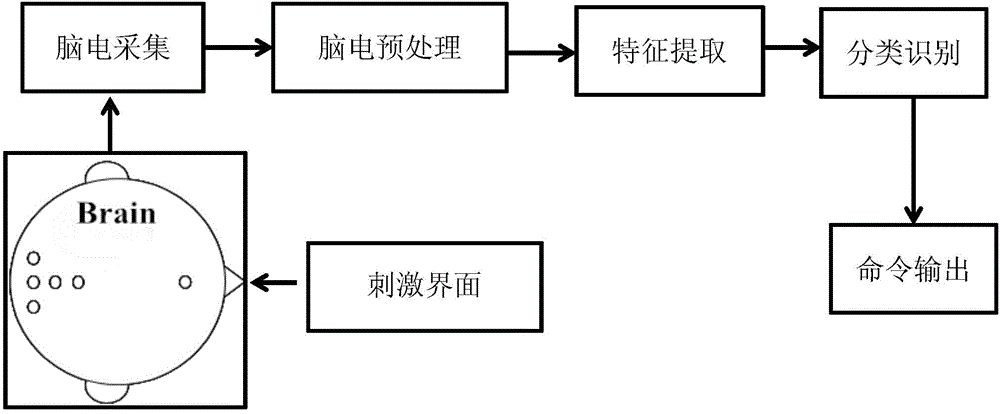Brain-computer interface method based on high-frequency flicker emotional simulation
A computer interface and emotion technology, applied in the field of brain-computer interface, can solve problems such as false positive operation, and achieve the effect of reducing fatigue and improving information transmission rate
- Summary
- Abstract
- Description
- Claims
- Application Information
AI Technical Summary
Problems solved by technology
Method used
Image
Examples
Embodiment Construction
[0022] In order to make the purpose, technical solution and advantages of the present invention clearer, the implementation manners of the present invention will be further described in detail below.
[0023] The study found that phase resetting in the occipital cortex was followed by an increase in phase stability across the entire cerebral cortex. Therefore, a fast and stable SSVEP phase reset measurement is well suited for the SSVEP-BCI platform, and in this platform it is more effective to detect the onset of SSVEP than its intensity. In this method, a combination of phase-locked value variation (PLVV) and wavelet energy is used to avoid possible false positive operations. In terms of stimulation methods, this method combines emotional induction and high-frequency stimulation to make the system more comfortable and increase the information transmission rate of the system. Therefore, the performance of SSVEP-BCI can be improved by combining the two.
[0024] figure 1 A s...
PUM
 Login to View More
Login to View More Abstract
Description
Claims
Application Information
 Login to View More
Login to View More - R&D
- Intellectual Property
- Life Sciences
- Materials
- Tech Scout
- Unparalleled Data Quality
- Higher Quality Content
- 60% Fewer Hallucinations
Browse by: Latest US Patents, China's latest patents, Technical Efficacy Thesaurus, Application Domain, Technology Topic, Popular Technical Reports.
© 2025 PatSnap. All rights reserved.Legal|Privacy policy|Modern Slavery Act Transparency Statement|Sitemap|About US| Contact US: help@patsnap.com



